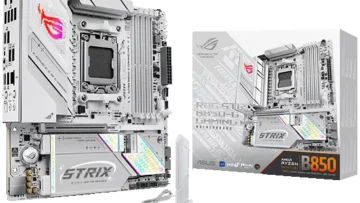Fixing OBS Sound Issues: Easy Solutions for Common Problems

Index
- What to do first when there’s no sound in OBS
- [No Microphone Sound] Solution if Microphone Sound is Not Detected in OBS
- [Desktop audio not working] Solution when PC sound is not recognized in OBS
- [When using a capture card] Solution if game sound is not being captured in OBS
- What to do when sound doesn’t come from OBS’s new “Application Audio Capture” function
- [Other] Solutions for when there’s no sound in OBS
- If there’s no improvement after trying OBS no sound solutions
- Frequently asked questions about no sound in OBS
If you find that there’s no sound coming from OBS Studio during a stream, it can be frustrating as it prevents your audience from understanding the content. However, most of these issues can often be resolved by checking three main causes.
- Microphone sound is not audible
- Desktop audio is not being captured
- No game audio when using a capture card
Additionally, there might be cases where the issue is caused by your PC or peripheral devices, rather than just settings.
This article explains the issue of no sound in OBS by breaking it down into different scenarios. If you want to seamlessly hear sound in OBS, check the procedures based on your symptoms and create an environment where you can confidently focus on game broadcasting and recording.
What to do first when there’s no sound in OBS
The reason for no sound in OBS is surprisingly often due to basic setting errors. Start by checking the fundamental points.
- Check if the audio is muted
- Check encoding settings
- Double-check if there’s really no sound
Check if the audio is muted
If the audio is not coming in OBS or there’s no sound in a recording file, the first thing to check is the “Audio Mixer” and the “PC’s volume settings”. It’s easy to overlook these points, but checking them can often resolve the problem.
Let’s start by taking a look at the audio mixer located in the lower part of OBS’s main screen.
Check if the sliders for desktop audio or microphone have not been lowered to the minimum, and make sure the speaker icon isn’t muted.
If it is muted, click the icon to unmute it and try raising the slider to around the middle.

Furthermore, make sure the speaker volume on your PC isn’t set to zero or muted. Click on the speaker icon at the bottom-right of the taskbar and adjust the volume bar.
Check encoding settings
By revising OBS’s encoding settings, you may often resolve audio related issues. If there’s no sound during streaming or recording, consider revising the settings.
① Open the settings screen
Select “Settings” from the “File” menu at the top-left of OBS.
② Change the “Bitrate” in “Output”
From the menu on the left side of the settings window, click “Output” and if the output mode is “Simple”, switch it to “Advanced”.
Adjust the “Bitrate” according to the content of your stream.
| Resolution/Frame Rate | Recommended Bitrate |
|---|---|
| 1,920×1,080 / 60fps | 4,500–9,000kbps |
| 1,280×720 / 30fps | 2,500–5,000kbps |
If there is a lot of movement like in game streaming, set it higher; if it’s mainly camera footage, it’s okay to set it lower.
Double-check if there’s really no sound
As a final check, change the audio output mode to see if there’s sound.
All you need to do is select the properties of OBS and switch “Audio Output Mode” to “Desktop Audio Output (WaveOut)”.
If you use a capture card for YouTube video streaming or live streaming, you may hear game audio by using this setting.
Once the issue is resolved, return the setting to “Capture only audio”, which can make malfunctions less likely to occur in other scenarios, so it’s worth trying.
[No Microphone Sound] Solution if Microphone Sound is Not Detected in OBS
If there’s no microphone sound in OBS, checking the basic settings should be your first priority.
The root cause can sometimes be easily overlooked, so verify the following in order.
- Check the “Microphone Audio” setting items
- Unmute the “Audio Mixer”
- Check the “Advanced Audio Properties”
- Delete all “Noise Gates”
- Set “Monitoring Device” to default
No Mic Audio in OBS? Here’s What Could Be Wrong and How to Fix It
Check the “Microphone Audio” setting items
Even if the microphone is correctly connected, if there is an issue with OBS settings, the sound won’t be output. Follow the steps below to confirm the settings.
- Open OBS settings
- Open the “Audio” tab
- Select the microphone to use
From the dropdown menu in “Microphone Audio”, choose the microphone you are using. If using a USB microphone or capture board, ensure the device name matches. - Save changes
Be aware that settings may be reset after updates to Windows or OBS.
When used together with audio input capture, it might cause double sound, so disable one if necessary.
Unmute the “Audio Mixer”
Check if the mute button on the audio mixer is not activated.
The difference between normal and muted states is as shown in the image, so click the icon to change the settings.
Check the “Advanced Audio Properties”
Audio track setting errors can easily lead to no sound during streaming or recording. Check the “Advanced Audio Properties” and make the necessary settings.
- Open Advanced Properties
Click the gear icon in the lower left of the audio mixer and select “Advanced Audio Properties”. - Check tracks
For all necessary audio sources like “Microphone” or “Desktop Audio”, check all tracks 1~6. - Confirm output settings
Open “Settings” → “Output” and make sure “Audio Track” is set to “1”.
After saving the settings, restart OBS.
Delete all “Noise Gates”
Sometimes microphone audio is not recognized due to audio filters. Start by deleting all filters to isolate the issue.
- Open filter settings
Right-click on “Microphone” in the audio mixer and select “Filters”. - Delete unnecessary filters
Delete all filters like “Noise Gate”, “Noise Suppression”, “Expander” displayed on the left. - Save changes
Click “Close” to save the settings.
Removing unnecessary filters may lead to a resolution if filters are the issue.
While filters are intended to stabilize audio, under certain environmental conditions, they can have the opposite effect, so adjust them according to the situation.
Set “Monitoring Device” to default
If you can’t hear the microphone sound even though it’s recognized in OBS, the “Monitoring Device” setting might be affecting it.
Check it by following these steps.
- Click Settings
Click “Settings” from “File” at the top-left of the screen. - Click Audio
- Change “Monitoring Device” to “Default”
With this, the monitoring feature should work correctly, and the sound output issue should be resolved. If settings do not apply immediately, try deleting and re-adding the “Video Capture Device”.
[Desktop audio not working] Solution when PC sound is not recognized in OBS
If the desktop audio is not being captured in OBS, it can disrupt game streaming or YouTube video creation.
The cause is usually related to the “Audio Devices” or “Incorrect Settings”, so check each cause and troubleshoot accordingly.
- Set “Desktop Audio Device” to default
- Set “Audio Monitoring” to “Monitor Off”
- Check for audio filter setting mistakes
Set “Desktop Audio Device” to default
If you previously manually changed the “Desktop Audio Device” settings, try switching it back to the default device.
- Open OBS settings
- Open the “Audio” tab
- Set desktop audio to “Default”
Select “Default” from the drop-down menu under “Desktop Audio”. It will automatically recognize the main audio output of your PC. - Save settings
If you connect a new audio device after starting OBS, restart OBS to apply the changes.
Set “Audio Monitoring” to “Monitor Off”
If the desktop audio level meter is active but there’s no sound for viewers, the audio monitoring settings may be the cause.
Check it with the following steps.
- Open “Advanced Audio Properties”
Click the gear icon in the audio mixer and select “Advanced Audio Properties”. - Check the audio monitoring of “Desktop Audio”
In the displayed screen, set “Audio Monitoring” for “Desktop Audio” to “Monitor Off”. - Apply and check
After saving the settings, use OBS’s preview or recording feature to check if the sound is being output.
If set to “Monitor only (mute output)”, viewers will not hear the sound, so be careful.
Check for audio filter setting mistakes
Audio filters may cause desktop audio to disappear. Especially problems tend to occur if the “Noise Suppression” filter is applied.
Check the settings using these steps.
- Open “Filters”
Click the ellipsis (or gear icon) next to “Desktop Audio” in the audio mixer and select “Filters”. - Delete unnecessary filters
If filters like “Noise Suppression” or “Expander” are listed, remove them. Applying these to desktop audio might cause malfunction. - Save and check
After deleting the filters, click “Close” to save the settings. Then confirm if the sound is coming out properly.
The basic rule is to apply audio filters to “Microphone” rather than “Desktop Audio”. Adjust the settings flexibly for stable audio output.
If the methods we’ve covered so far haven’t resolved the issue, be sure to check out this article for more in-depth solutions:
No Desktop Audio in OBS? Complete Guide to Causes and Fixes
[When using a capture card] Solution if game sound is not being captured in OBS
There are common issues when using a capture card for streaming in OBS such as “No game sound”, “Can’t hear game sound”, or “Game capture audio is not output”.
Sound output troubles are mostly due to poor connections or setting errors.
Let’s confirm and aim to solve each issue one by one.
- Check the connection status of the capture card
- Setting the “Custom Audio Device”
- Set “Monitoring Device” to default
Check the connection status of the capture card
If the capture card is not correctly connected, it may not be recognized by OBS, causing no volume or display issues.
Check these steps.
- Click “+” in OBS’s “Sources” section
- Select “Video Capture Device”
- Select “Create New”
In the displayed window, select “Create New”, enter a name of your choice, and click “OK”. - Check the display
Check if the name of the capture card you are using is displayed in the “Device” section. If not shown, it is likely due to a connection failure.
Setting the “Custom Audio Device”
With some capture cards, you won’t hear game sound unless the “Custom Audio Device” is set.
Refer to the following since issues often arise due to setting oversights.
<Examples of capture cards needing custom settings>
- AVT-C878 Series
- AVerMedia LGP2 Audio Stream Engine
- C988
- AVerMedia LGHD Audio Stream Engine
- GC553
- AVerMedia Live Gamer Ultra Audio Stream Engine
- GV-USB3 Series
- I-O DATA GV-USB3/HD, GV-USB3HDS
- UP-GHDAV2
- HDMI Video Capture 2
- Other driverless UVC/UAC compatible devices
<Setup steps>
- Open OBS settings
Right-click on the video capture device and open “Properties”. - Check “Use Custom Audio Device”
Select this option to display the “Audio Device” item. - Select an appropriate device
Choose the audio device compatible with your capture card. - Apply and verify
After saving the settings, play OBS’s preview to check if audio comes out.
Set “Monitoring Device” to default
If the level meter of the video capture device moves but you can’t hear game sound, revise this setting to potentially resolve the issue.
- Click Settings
Click “Settings” from “File” at the top-left of the screen. - Click Audio
- Change “Monitoring Device” to “Default”
If settings don’t apply immediately, try removing and then re-adding the “Video Capture Device”.
What to do when sound doesn’t come from OBS’s new “Application Audio Capture” function
OBS’s “Application Audio Capture” is a convenient feature, but sometimes specific sounds can’t be selected and don’t get captured during streaming. This issue tends to occur when using capture cards, browsers, and media sources.
Issues typically get resolved by checking the settings below.
- Re-add application audio capture
Click “+” in the Source section, then create a new “Application Audio Capture”. - Select target app
In the settings window, choose the application you want to include in your stream. - Check the audio mixer
Check that the volume for the selected app isn’t muted in the audio mixer. - Restart OBS
Once settings are saved, restart OBS to ensure changes take effect.
[Other] Solutions for when there’s no sound in OBS
Since various factors can lead to no sound in OBS, checking overlooked points can lead to an early resolution.
If you’re experiencing the following phenomena, refer to the solution steps provided.
- Sound only coming from one ear
- Sound is output but too quiet
Sound only coming from one ear
If audio is only heard from one ear, converting to “Mono” may resolve the issue.
This is a straightforward process, so if you notice audio bias, give it a try.
- Open “Advanced Audio Properties”
Click the gear icon in the audio mixer and select “Advanced Audio Properties”. - Check “Mono”
Check the “Mono” box for the relevant microphone audio.
Sound is output but too quiet
When desktop or microphone audio is too quiet, it makes it hard for viewers to hear. This problem can be solved by adding “Gain” in OBS’s “Audio Filters”.
Use the following steps to adjust the settings.
- Open audio mixer settings
Right-click the relevant source (microphone or desktop audio) in the audio mixer and select “Filters”. - Add “Gain”
Click the “+” at the bottom and select “Gain”. Using the name “Gain” is fine. - Adjust dB level
Adjust the dB level using the slider on the right. Typically 5-10 dB is advisable to start with. - Use noise suppression
Increasing gain can also amplify environmental noise, so add a “Noise Suppression” filter to reduce noise.
If the issue still isn’t resolved after trying the methods above, this article offers further guidance focused specifically on game audio:
Game Sound Not Working in OBS? Causes and Fixes Explained
If there’s no improvement after trying OBS no sound solutions
If you still have no sound after trying the methods introduced here, the problem might lie in factors other than OBS. Suspect settings in software or games, and use the solutions below to identify possible causes.
- Reset audio settings with a restart
- Install the latest version
- Consider the specifications of PC games
Reset audio settings with a restart
As OBS handles a significant amount of resources, temporary faults can sometimes be the cause.
If it is a temporary issue, it’s likely to be resolved by restarting. It doesn’t take much time, so it’s worth trying before the problem persists.
- Restart OBS
Exit OBS and restart it. If you saved your settings at exit, they will remain after restarting. - Restart the PC
The audio driver on the PC may be the cause. Restart the PC to reset the operation of the audio device. - Try several restarts
If it doesn’t resolve in one attempt, try restarting OBS and the PC several times.
Install the latest version
If there is no improvement after trying all methods, the issue could be due to bugs in OBS itself or compatibility issues.
Consider updating to the latest version or reinstalling it.
- Download the latest version from the official site
- Uninstall and reinstall
- Backup settings
While an updated version with bug fixes increases stability, old plugins or settings might be deleted, so you’ll need to reconfigure as necessary.
Consider the specifications of PC games
When there’s no sound during live streaming, it may be due to the specifications of the game itself. Especially in PC games, some do not play sound when “inactive”.
<Specific example>
- Switching from the game screen to OBS makes it inactive.
- Game sound is not audible to you or your viewers in inactive mode.
<Solutions>
- Check game options
Some games provide settings to play sound even when inactive. Enable “Play sound” in the settings menu. - Play in window mode
Switching from full screen to window mode may help prevent inactive state.
Similar concerns have been reported on Microsoft Community.
If you feel “the game sound isn’t coming out…” or “I can’t hear the game sound…”, check the game’s specifications and settings accordingly.
Frequently asked questions about no sound in OBS
For those who still have unresolved questions regarding no sound in OBS, here are some frequently asked questions along with their answers.
- What’s the solution if there’s no sound from a headset in OBS?
- What’s the solution if there’s no sound from a media source (BGM) in OBS?
- What’s the solution if specific application sounds (Zoom, Discord) don’t come out in OBS?
What’s the solution if there’s no sound from a headset in OBS?
If there’s no sound from a headset or headphones in OBS, often it’s a connection or settings issue. Check the following steps to identify and resolve the cause.
- If connected via USB
Ensure the device is correctly connected. If the connection is unstable, try another USB port. - If connected via Bluetooth
Verify that the device is correctly paired on Windows or Mac’s Bluetooth settings screen. Unpairing and reconnecting the device can be effective.
What’s the solution if there’s no sound from a media source (BGM) in OBS?
If you’ve added a media source in OBS but music doesn’t play or if an audio interface is introduced yet no sound is heard, there might be issues with settings or the file format.
Resolve the no sound issue by following these steps.
- Audio track settings
Open “Advanced Audio Properties” in OBS to check if the media source audio track is enabled. It’s crucial that track 1 is selected for recording and streaming. - File format confirmation
The files used as a media source should ideally be in MP3 or WAV format. Non-compatible formats may not be playable. - Enable loop playback
Ensure that “Loop” is enabled in the media source properties to prevent BGM from cutting off.
Want to add background music to your stream? This article walks you through how to play BGM in OBS and also introduces royalty-free music sites you can safely use:
How to Add BGM to Your OBS Stream – Plus Free, Commercial-Use Music Sources
What’s the solution if specific application sounds (Zoom, Discord) don’t come out in OBS?
If the audio from Zoom or Discord is not being captured by OBS, adjustments in settings or the use of virtual audio devices might be required. Resolve the problem by following these steps.
- Zoom settings
Check if the speaker output device is correct in “Settings → Audio”. By matching it with OBS’s specified desktop audio device, capturing becomes possible. - Discord settings
In “User Settings → Voice & Video”, match the “Output Device” with OBS. Using virtual devices like Virtual Audio Cable helps in clarifying the audio route.
* If sound is being output during screen share, streaming should work fine - Adjustments on OBS
Check the level meter in the audio mixer and set audio monitoring to “Monitor and Output”.
How to Share Discord Audio and Screen in OBS – Step-by-Step Integration Guide
This article detailed the causes and solutions for no sound in OBS by symptom. Below is a quick summary of key points.
| Symptom | Main causes and solutions |
|---|---|
| Microphone sound not detected | Setting errors or impact of noise filters. Check microphone audio settings and delete unnecessary filters. |
| Desktop audio not working | Device settings or audio monitoring mistakes. Set to default device, check if Monitor Off. |
| Game sound not audible | Poor capture card connection or unconfigured custom audio device. Check connections and reconfigure device settings. |








